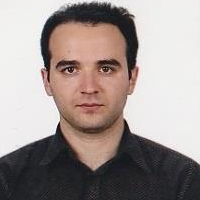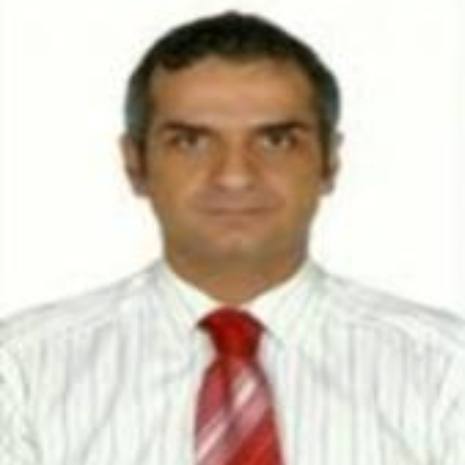International Journal of Wireless and Microwave Technologies (IJWMT)
IJWMT Vol. 12, No. 2, 8 Apr. 2022
Cover page and Table of Contents: PDF (size: 765KB)
Analysis, Design and Realization of Negative Impedance Converter Circuit with Current Feedback Operational Amplifier
Full Text (PDF, 765KB), PP.1-10
Views: 0 Downloads: 0
Author(s)
Index Terms
Negative Impedance Converter, Non-Foster Circuit, Matching, Current Feedback OPAMP.
Abstract
Negative impedance converter (NIC) circuits are very interesting and beneficial building blocks with the capability of generating negative resistance, capacitance and/or inductance elements which do not exist as a singular electrical component in practice. They are commonly used for the impedance matching and parasitic element cancellation in electrically small antennas and amplifier circuits. In this study, a special kind of NIC circuit in HF band up to 30 MHz is analysed, designed and physically realised with a current feedback (CFB) operational amplifier (OPAMP) which is the core active element of the NIC circuit. The non-inverting terminal of CFB OPAMP is used for RF input signal with the elimination of DC offset voltage in the proposed NIC circuit. The negative impedance conversion capability of the circuit is theoretically proved and simulated first. This capability of CFB OPAMP to generate negative impedance is very important in high-frequency applications as they have low distortion and faster switching than that of voltage feedback (VFB) OPAMP. For the physical realizations, printed circuit board (PCB) is designed and manufactured on FR-4 dielectric material. Measurement results obtained from the realized circuit with resistive (100Ω) and capacitive (10pF) loads to be converted negatively showed that the negative impedance conversion performance of the circuit is very close to its theoretical behaviour in the lower HF frequencies generally in 3- 20 MHz band.
Cite This Paper
Sami Durukan, Asim Egemen Yilmaz, Mahmut Keser, " Analysis, Design and Realization of Negative Impedance Converter Circuit with Current Feedback Operational Amplifier", International Journal of Wireless and Microwave Technologies(IJWMT), Vol.12, No.2, pp. 1-10, 2022. DOI: 10.5815/ijwmt.2022.02.01
Reference
[1]R. M. Foster, “A reactance theorem,” Bell System Technical Journal, vol. 3, p. 259-267, 1924, doi:10.1002/j.1538-7305.1924.tb01358.x.
[2]J. G Linvill, “Transistor negative impedance converter,” Proceedings of the I.R.E., vol. 41, p. 725–729, 1953, doi: 10.1109/JRPROC.1953.274251.
[3]S. E. Sussman-Fort, “Matching network design using Non-Foster Impedances,” Wiley Periodicals, vol. 16, p. 135-142.2005, doi: 10.1002/mmce.20118.
[4]S. E. Sussman-Fort, and R. M. Rudish, “Non-Foster impedance matching for transmit applications”, IEEE Int. Conf. on Antenna Technology, Small Antennas and Novel Metamaterials, p. 53-56, 2006, doi: 10.1109/IWAT.2006.1608973.
[5]S. E. Sussman-Fort, and R. M. Rudish, “Non-Foster impedance matching of electrically-small antennas to transmitters”, Antenna Applications Symposium, vol. II, p. 326-342, 2008.
[6]S. E. Sussman-Fort, and R. M. Rudish, “Non-Foster impedance matching of electrically small antennas,” IEEE Trans. Antennas Propag., vol. 57, no. 4, p. 2230-2241, 2009, doi: 10.1109/TAP.2009.2024494.
[7]R. L. Brennan, “The emergence of the negative impedance converter in CMOS integrated circuits,” Univ. of Waterloo, 1986.
[8]R. L. Brennan, T. R. Viswanathan, J. V. Hanson, “The CMOS negative impedance converter”, IEEE Journal of Solid-State Circuits, vol. 23, no. 5, p. 1272–1275. 1988, DOI: 10.1109/4.5957.
[9]S.I. Liu, H.W. Tsao, J. Wu, M.O. Yang, J.H. Tsay, “New CMOS/NIC-based MOSFET-C filters”, IEEE Electronic Letters, vol. 27, no. 9, p. 772–774, 1991, doi: 10.1049/el:19910480.
[10]K. Tabei, et al, “Realization of highly linear MOS circuits using negative impedance converters”, IEEE Electronic Letters, vol. 27, no. 16, p. 1416–1417, 1991, doi: 10.1049/el:19910888.
[11]E. Hancioglu, and A.U. Keskin, “CMOS NIC using unity gain cells,” The 16th International Conference on Microelectronics, p. 309-312, 2004, doi: 10.1109/ICM.2004.1434275.
[12]A. Brucher, P. Meunier, B. Jarry, P. Guillon, and S. E. Sussman-Fort, “Negative resistance monolithic circuits for microwave planar active filter losses compensation”, 25th European Microwave Conference. Bologna, Italy, p. 910–915, 1995, doi: 10.1109/EUMA.1995.337094.
[13]A. Brucher, P. Meunier, C. Cenac, B. Jarry, and P. Guillon, “Broadband and tunable negative monolithic circuits for microwave active filters compensation” IEEE Microwave and Millimeter-wave Monolithic Circuits Symposium, Orlando, USA, p. 745–748. 1995, doi: 10.1109/MCS.1995.470955.
[14]S. Kolev, and B. Delacressonniere, J.L. Gautier, “Using a negative capacitance to increase the tuning range of a varactor diode in MMIC technology”, IEEE Transactions on Microwave Theory and Techniques, vol. 49, no. 12, p. 2425–2430. 2001, doi: 10.1109/22.971631.
[15]S. Lee, H. Park, K. Choi, and Y. Kwon, “A broadband GaN pHEMT power amplifier using non-Foster matching” IEEE Transactions on Microwave Theory and Techniques, vol. 63, no. 12, p. 4406-4414, 2015, doi: 10.1109/TMTT.2015.2495106.
[16]C. N. Akwuruoha, Z. Hu, Y. J. Licea, “Microstrip non-Foster circuit high efficiency high power class-J GaN HEMT amplifier”, IEEE International Conference on Microwaves, Antennas, Communications and Electronic Systems (COMCAS), Tel-Aviv, Israel, 2017. DOI: 10.1109/COMCAS.2017.8244853.
[17]R. Tagawa, Y. Takahashi, “5.3 GHz, 69.6 dBΩ transimpedance amplifier with negative impedance converter”, International Symposium on Intelligent Signal Processing and Comm. Sys. (ISPACS). Ishigaki, Japan, p. 396-400, 2018, doi: 10.1109/ISPACS.2018.8923431.
[18]X. Danting, K. Sitthisak, L. Chi-Kwan, “Study of negative impedance and its applications to power electronics,” 7th International Conference on Power Electronics Systems and Applications - Smart Mobility, Power Transfer & Security (PESA), Hong Kong, China, 2017. doi: 10.1109/PESA.2017.8277779.
[19]T. H. Kim, K. Sitthisak, L. Chi-Kwan, “High Q-factor coil with transistorized negative impedance converter for mobile applications,” IEEE Wireless Power Transfer Conference (WPTC), London, UK, p. 63-66, 2019, doi: 10.1109/WPTC45513.2019.9055596.
[20]T. H. Kim, G. H. Yun, W. Lee, J-G. Yook, “Highly efficient WPT system with negative impedance converter for Q-factor improvement,” IEEE Access, vol. 7, 2019, doi: 10.1109/ACCESS.2019.2933004.
[21]K. Soundararajan, K. Ramakrishna, “Non-ideal Negative Resistors and Capacitors Using an Operational Amplifier”, IEEE Transactions on Circuits and Systems, vol. 22, no. 9, p. 760-763, 1975, doi: 10.1109/TCS.1975.1084115.
[22]Y. Shen, T. H. Chio, “Limitation of negative impedance converter using operational amplifier for matching electrically small antenna”, IEEE Antennas and Propagation Society International Symposium (APSURSI), Orlando, USA, p. 1962-1963, 2013, doi: 10.1109/APS.2013.6711639.
[23]Y. Horii, S. Takagi, “Theoretical study on stable broadband non-foster negative capacitors yielded by parasitic reactance of an operational amplifier”, 9th International Congress on Advanced Electromagnetic Materials in Microwaves and Optics, Oxford, UK, p. 109-111, 2015, doi: 10.1109/MetaMaterials.2015.7342539.
[24]S. Yamanaka, K. Matsumoto, Y. Horii, “Theoretical study on operational-amplifier-based negative impedance converters with symmetrically allocated impedance elements”, Asia-Pacific Microwave Conference, Nanjing, China, 2015, doi: 10.1109/APMC.2015.7413465.
[25]D. V. Belenko, A. A. Golovkov, E. I. Mozhaeva, “Operational amplifier finite gain and bandwidth influence to non-foster impedance matching”, IEEE Conference of Russian Young Researchers in Electrical and Electronic Engineering (EIConRus), St. Petersburg and Moscow, Russia, p. 1233-1235, 2017, doi: 10.1109/EIConRus.2017.7910785.
[26]K. Matsumoto, T. Ktamura, Y. Horii, “Miniaturized circuit design of operational amplifier based non-Foster impedance”, 11th International Congress on Engineered Materials Platforms for Novel Wave Phenomena (Metamaterials). Marseille, France, p. 148-150, 2017, doi: 10.1109/MetaMaterials.2017.8107871.
[27]B. Buyantuev, D. Kholodnyak, “Applications of non-Foster elements to design advanced RF and microwave devices”, IEEE Conference of Russian Young Researchers in Electrical and Electronic Engineering (EIConRus). Moscow and St. Petersburg, Russia, p. 1656-1660, 2018, doi: 10.1109/EIConRus.2018.8317420.
[28]Z. Xia, M. Li, Z. Qirealizing, “Wideband negative inductor using current feedback amplifier”, Wiley Periodicals Microwave and Optical Technology Letters, vol. 58, no. 7. p. 1723-1728, 2016, doi: 10.1002/mop.
[29]W. Jung, Op Amp Applications Handbook. 1st ed. Massachusetts, USA, Elsevier, 2005.
[30]Analog Devices, LT1210, 1.1A 35MHz Current-Feedback Amplifier, https://www.analog.com/en/products/lt1210.html, visited on Sep./2021.
[31]Analog Devices, Analog Dialog Articles: Common Problems When Designing Amplifier Circuits, https://www.analog.com/en/analog-dialogue/articles/common-problems-when-designing-amplifier-circuits.html, visited on Oct./2021


